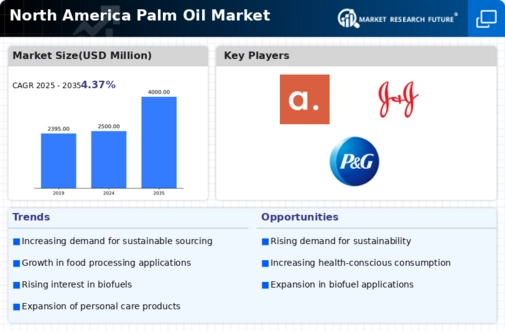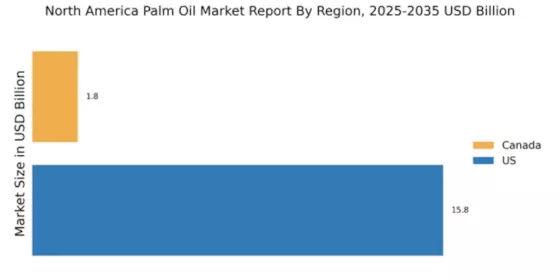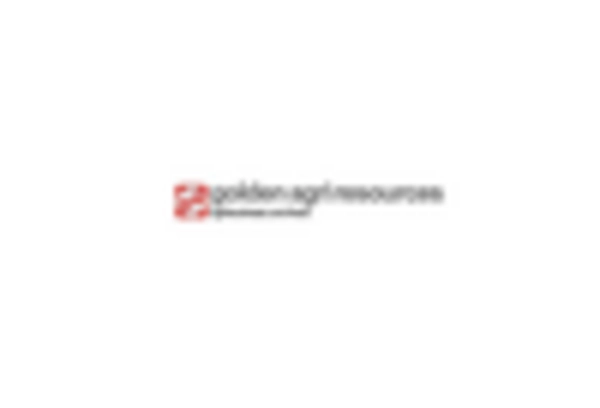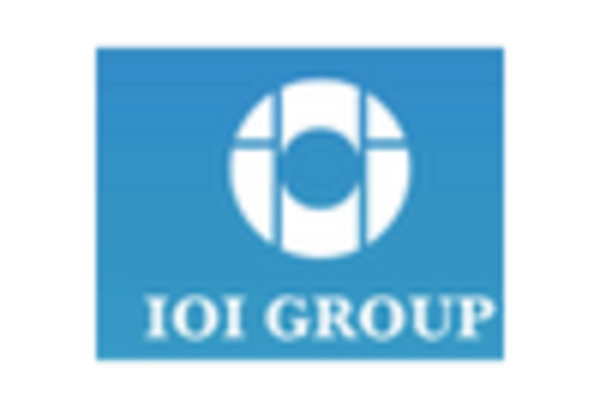Shifts in Consumer Preferences
The palm oil market is currently witnessing significant shifts in consumer preferences, particularly towards plant-based and vegan products. This trend is driven by a growing awareness of environmental issues and health benefits associated with plant-based diets. As a result, the demand for palm oil as an ingredient in vegan and vegetarian products is likely to increase. In 2025, it is estimated that the market for plant-based food products containing palm oil could grow by 15%, reflecting changing dietary habits. Companies that align their product offerings with these preferences may find new opportunities for growth within the palm oil market.
Innovations in Palm Oil Processing
Technological advancements in processing techniques are playing a crucial role in the palm oil market. Innovations such as enzymatic processing and membrane filtration are enhancing the efficiency and quality of palm oil extraction. These methods not only reduce waste but also improve the overall yield of oil, which is vital for meeting the increasing demand in North America. As processing technologies evolve, they may lead to cost reductions and higher profit margins for producers. Furthermore, the adoption of these technologies could position companies favorably within the palm oil market, as they strive to meet both economic and environmental standards.
Rising Demand for Sustainable Products
The palm oil market in North America is experiencing a notable shift towards sustainable products. Consumers are increasingly prioritizing environmentally friendly options, which has led to a surge in demand for sustainably sourced palm oil. This trend is reflected in the growing market share of certified sustainable palm oil, which accounted for approximately 30% of total palm oil imports in 2025. Retailers and manufacturers are responding by reformulating products to include sustainable palm oil, thereby enhancing their brand image and meeting consumer expectations. As a result, companies that invest in sustainable sourcing practices may gain a competitive edge in the palm oil market, potentially increasing their market share and profitability.
Health Consciousness and Nutritional Awareness
In recent years, there has been a marked increase in health consciousness among consumers in North America, influencing the palm oil market. As individuals become more aware of dietary fats and their health implications, the demand for palm oil, which is rich in saturated fats, is being scrutinized. However, palm oil also contains beneficial nutrients such as vitamin E and antioxidants, which may appeal to health-conscious consumers. The market for palm oil products that emphasize these health benefits is likely to expand, as manufacturers adapt to consumer preferences. This shift could lead to a diversification of palm oil products, catering to a more health-oriented demographic.
Regulatory Framework and Labeling Requirements
The regulatory landscape surrounding the palm oil market in North America is evolving, with increasing scrutiny on labeling and sourcing practices. New regulations aimed at promoting transparency and sustainability are being implemented, which may impact how palm oil is marketed and sold. Companies are now required to provide clear information regarding the sourcing of palm oil, which could influence consumer purchasing decisions. Compliance with these regulations may necessitate changes in supply chain practices, potentially increasing operational costs. However, businesses that proactively adapt to these regulatory changes may enhance their reputation and consumer trust within the palm oil market.


















Leave a Comment